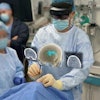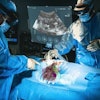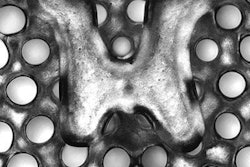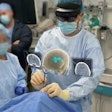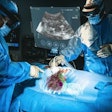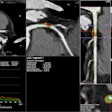Dear Advanced Visualization Insider,
A growing number of clinicians are turning to cinematic rendering -- also known as global illumination -- to enhance their ability to visualize complex cases ranging from those involving highly vascularized tumors to tiny bone fractures.
In this edition's Insider Exclusive, a team of radiologists and osteologists from Thailand leveraged the photorealistic quality of cinematically rendered CT scans to improve upon the noninvasive evaluation of pelvic bones. The technique proved critical in helping them identify key features for age estimation.
Other advanced visualization technologies, too, have garnered increasing attention from physicians in recent months. Neuroradiologists and surgeons from MD Anderson Cancer Center explored several potential clinical applications of virtual reality (VR) in a presentation at RSNA 2018. Their preliminary tests using VR to evaluate brain MRI scans in a fully immersive 3D environment inspired them to promote the technology for planning complex brain tumor surgery.
A separate presentation at RSNA 2018 discussed the possibility of using an augmented reality (AR) headset to guide several spinal procedures. The researchers from Washington, DC, confirmed that the technology was a viable alternative to conventional image-guided techniques. Also incorporating AR into surgery, a group from South Korea developed a method that relied on AR and a robotic surgical machine to perform left thyroid lobectomy on an actual patient.
AR can be useful outside of the surgical suite as well, according to researchers from New York, who created hundreds of AR and 3D-printed models of the kidney and prostate for patients to view during preoperative consultations. The extent to which these models benefited patient education was the subject of their RSNA presentation.
3D printing may additionally serve a role in a wide range of other tasks in healthcare. An international team of investigators developed a way to localize lung nodules using a 3D-printed navigational template based on data from patient CT scans. For Louisiana researchers, 3D printing ended up being their answer for efficiently testing radiation therapy protocols. They created a 3D-printed full-body phantom that cost dramatically less than traditional phantoms and was capable of undergoing testing for fast-neutron radiation therapy.
For more on the latest news and research in this field, check out our Advanced Visualization Community at AuntMinnie.com.
